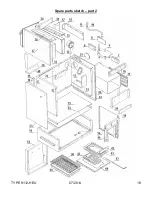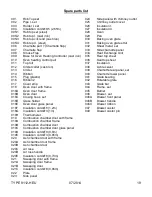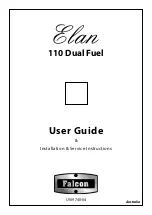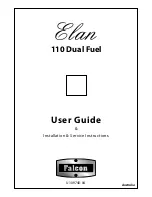
TYPE 9112-HEU
07/2014
5
Fuel
The appliance is designed for combustion of solid fuel:
- recommended fuel is wood (max. diameter 190 mm, max. length 450 mm).
- the appliance also enables burning of other kinds of solid fuel (wood briquettes, waste wood,
brown coal briquettes, brown coal blocks 40 mm). However the operating conditions and
parameters of the appliance may differ from those with the recommended fuel. Please note that
the technical characteristics given above were based on a test wood fuel sample and using other
fuel types will alter these characteristics, energy output, fuel consumption, flue draught etc.
Make sure that the fuel is dry. It is not recommended to burn high-calorific fuels, which reduce the
service life of the appliance.
Grate, Grating
The purpose of the grate is allowing the burned fuel to fall to the ashtray, which increases the
supply of combustion (primary) air to the combustion chamber. It is done by means of the poker
with the combustion chamber door open.
After the end of each operation (and cooling down) it is possible to grip the grate lever to move the
grate back and forth. To remove the pieces which are too big to fall through, rotate the grate a few
times by means of this lever.
Air Supply Control
Controlling the supply of primary combustion air is enabled by means of the air rose, which is a
part of the ashtray door. Turning the rose by means of the rose handle enables precise control of
air to the combustion chamber and thus alters the speed of fuel combustion (energy output of the
appliance).
The secondary combustion air supply can be controlled by means of a lever on the front part of
the appliance (Drawing 1, point 13). Air supply is opened (flap is opened) by movement of the
lever towards to the front side of appliance and it is closed (the flap is closed) by movement from
the front side. Movements lock on the lever by neck.
During the operation of the appliance the supply of the combustion air must be maintained, the air
supply inlet must not become blocked. Mechanical ventilation/ air extraction must not be used in
the room where the appliance is placed, unless there is provided sufficient air supply for
ventilation. Ventilation levels are provided in your local building regulations. It is advised to check
ventilation issues with your local building control office to ensure trouble free operation.
The Ash Extracting Door (Drawing 1, point 6 – Sweeping door)
When the cooker has been in operation for some time, soot will collect in the cooker parts of the
draught system (especially where coal has been used). This will eventually affect the draught and
may create problems while lighting the fire. It will also make operation of the cooker less
economical, especially when cooking in the oven.
In the course of cleaning take off the hob top plates, then remove the soot first from the sides
of the oven walls. Clean all the removed deposits through the ash extracting slot situated under
the oven door. This can be done simply by using damp newspaper, for example.
Service Instructions







































